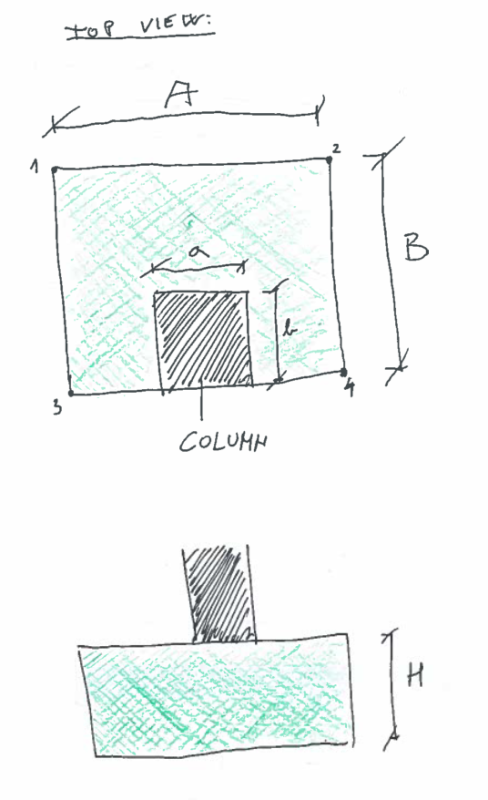mats12
Geotechnical
- Dec 17, 2016
- 181
I have an eccentrically loaded single foundation (sketch bellow). A column is on the edge of foundation since there is an existing structure right next to it. I want to calculate contact pressures under a foundation in point 1, 2, 3 and 4. I havent done this in years and I cant find my equations...Any help?
thanks.

thanks.








